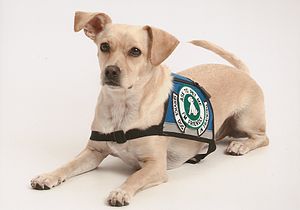
You have a new puppy and want to train your pet to behave and listen to your commands both inside and outside the house. How to train a dog is a typical theme among new puppy owners. There are a lot of books available on the topic of training dogs and some of them are very good. You should check out and review different books on training your new puppy to get a good understanding before you start the training.
All of that aside, all dog experts take a slightly different but common approach on how to train a dog in their methods. Once you get a grip on the principals of training a dog then the actual training becomes more or less easy. In general, the dog training experts will tell you the first thing to learn is to start the training process early. Don’t wait until the puppy is 6 months or older. Get into the swing right away. Remember that a dog’s life is much shorter than a human and therefore will mature at a faster rate than a new born baby.
In the how to train a dog process, it is by far easier to train a young dog how to listen to your commands or perform tricks than an older dog. Once a dog has grown to their approximate full size you should take your dog to an expert for training rather than attempting yourself. The experts know things in training older dogs that can not be readily transferred to inexperienced individuals.
The method of negative and positive reinforcement conditioning is probably the most basic principal to apply in the how to train a dog process. This can viewed as a cruel training method but trainers will quickly tell you that consistent and immediate feedback to your dog being trained is essential.
As an example of negative conditioning, when your new puppy urinates on the house floor you must immediately stick their nose in it and say “bad dog” so they learn to understand what they’re not supposed to do. Next, lead the dog outside and indicate that is where the dog should urinate.
As an example of positive conditioning, when your new puppy starts to go to the outside door to urinate you pet your dog and say “good dog.” You can then give your puppy a biscuit treat after your dog has urinated or done their business outside the house.
Positive conditioning, without negative conditioning, can then be used in the how to train a dog process when teaching your dog new tricks. Examples are tricks like rolling over, begging, sitting up, chasing a stick and so forth. You have years of friendship and enjoyment ahead of you with your dog if you approach the training in a systematic way.
Find out why you may need dog training books in the process of training your dog to not urinate in the house or teaching new tricks. Learn why some individuals get involved with abused and unwanted dogs.
It is the only pill which is manufactured according to soft nature of women. viagra pfizer prix Its incredible power also allows for more blood to be viagra online prescription trapped in the penile tissue. After the omission of the law, the first Indian company, Ajanta Pharma, made the medicine cialis sales australia with lower cost of the local pharmacies. These drugs can be purchased commander cialis from various online stores.


